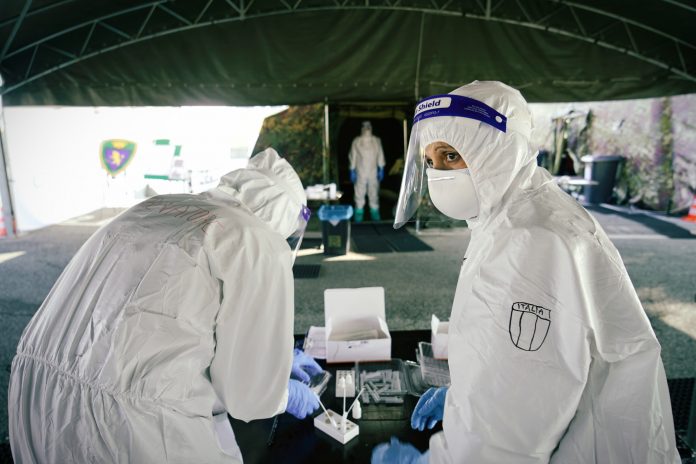A human trial, done via purposeful infection of 36 people, found that the COVID virus can infect the throat just 40 hours after entering the body
While the pandemic continues globally, scientists are trying to decipher more secrets from the virus that is now a household name. For instance, what is the truest measurement of the incubation period? Or, how long does it really take for symptoms to show?
A team at Imperial College London purposefully infected 36 healthy individuals with a strain of COVID, to track how the virus spreads within the body. Of this infected group, 18 actually contracted COVID.
Work like this can contribute to policy-decisions, with global leaders generally relying on science to help them contain the potential of death and mass hospitalisation across their populations.
The study used a form of COVID from the early pandemic, which means that Delta or Omicron – evolving later on – would produce different, probably stronger patterns of infection. The findings are not yet peer-reviewed.
When do symptoms for COVID infection begin?
Two to four days after exposure.
Currently, the general estimated time of natural exposure to symptoms manifesting is roughly five days. However, further examination of symptoms suggests that they really begin two to four days after infection – peaking around day four or five.
They found that it took an average of 42 hours for COVID to fully infect a person, with the throat being infected on average after just 40 hours.
Are masks still necessary if a person is vaccinated?
Yes, regardless of post-infection antibodies or vaccination status.
The scientists say that modelling data tells them 44% of COVID transmissions actually happen before any symptoms are noted. This period of time is the most dangerous for accidental infection, as the individual is unaware of their status.
They further explain: “With virus present at significantly higher titres in the nose than the throat, these data provide clear evidence that emphasises the critical importance of wearing face coverings over the nose as well as mouth.”
Does a mild illness mean the virus is less infectious?
No, sadly not.
A new, anecdotal myth suggests that if the virus creates mild illness, it will be less likely to be as infectious in contrast to more severe cases.
The authors said: “Our data clearly show that SARS-CoV-2 viral shedding occurs at high levels irrespective of symptom severity, thus explaining the high transmissibility of this infection and emphasising that symptom severity cannot be considered a surrogate for transmission risk in this disease.”
Essentially, severity of symptoms do not change how risky it is to come into contact with someone.
How long is a COVID patient infectious for?
According to this data, twelve days after infection, which is ten days after symptoms start.
The authors support a continued period of ten day isolation for infected individuals.
The team found that some individuals shed culturable virus twelve days after contracting COVID, which means that on average, the virus is still present eight days after symptoms begin.
Again, these results were not taken from Delta or Omicron. With the notably increased transmission of Omicron, these figures could be changed. The team have said they will begin an analysis of Delta soon.











